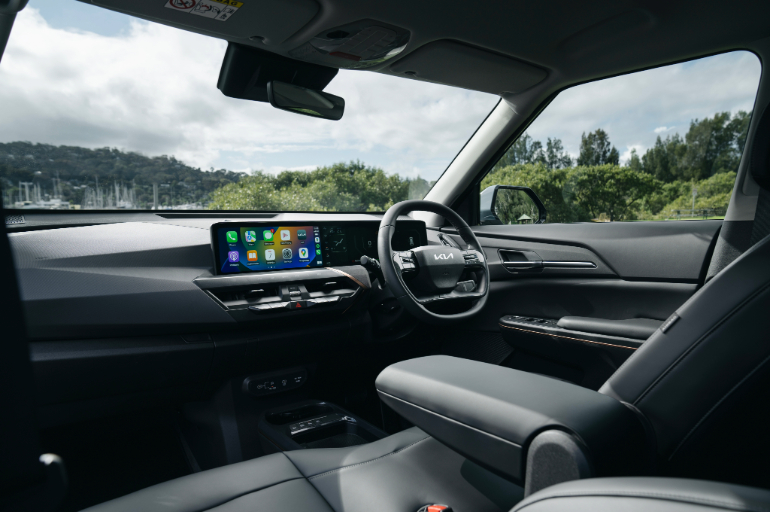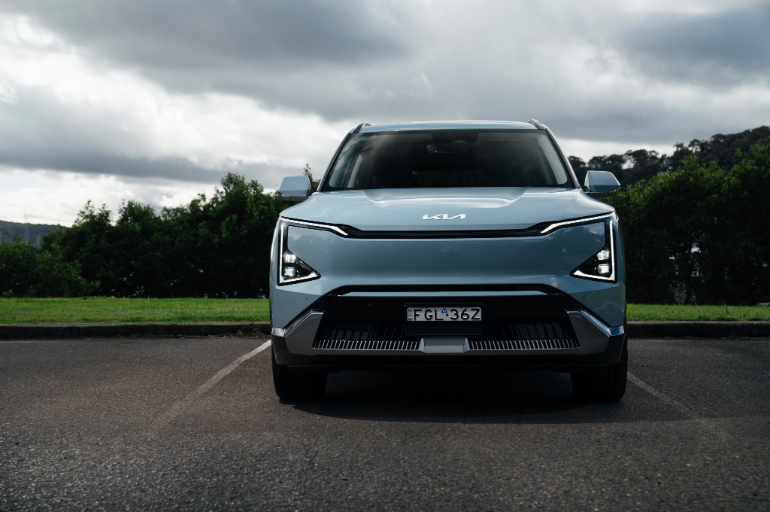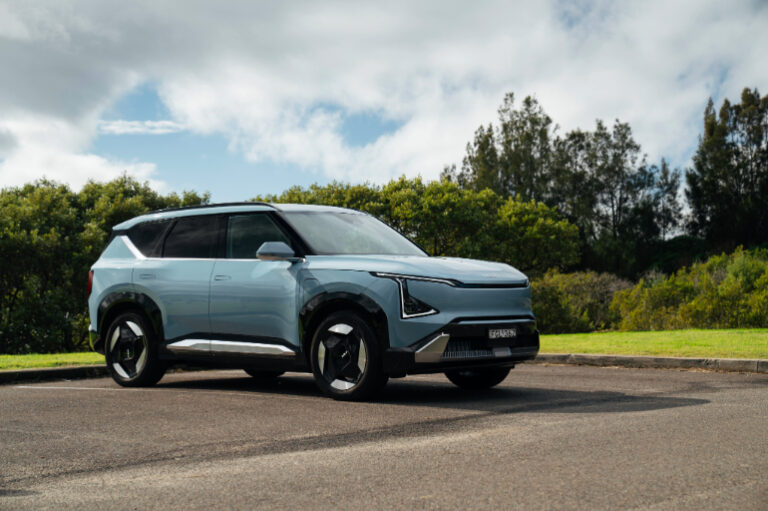Kia Australia has launched a new electric SUV – the EV5 – and it could be a sweet spot option for fleet customers.
In fact, the brand’s local boss, Damien Meredith, has stated that he expects 60 percent of EV5 sales to be taken by fleet operators large and small.
“The fleet department have spoken to fleet companies, and big ASX companies. We’ve been doing that for over 12 months,” he said.
“Corporate and government are still strong in EV purchase, but where it has probably frozen is in that private sector. But there is still activity for big corporates.”
However, Mr Meredith admitted that the cooling of the EV market has led the brand to revise its sales targets for the EV5. Previously, the brand suggested it was aiming to sell 10,000 units per calendar year, but given current market conditions, that has been brought down to an expectation of around 5000 units.
So have those who may have been thinking EV a few months ago now switched their focus to hybrids? It appears so.
“We’ve been a bit handcuffed with our lineup with hybrids, due to supply,” Mr Meredith said.
“We get 50 Sportage hybrids, we sell them all. We get 40 Carnival hybrids, we sell 40. It’s hard to gauge where we actually are with hybrids,” he said, confirming that demand is outstripping supply for hybrid models for both fleet and private buyer types.
Even so, the EV5 is priced to appeal to a mix of customers, with a low entry point particularly targeting business buyers.
Pricing is as follows for the EV5 line-up:
- EV5 Air Standard Range FWD, 400km range – $56,770 drive-away / $56,770 plus on-roads
- EV5 Air Long Range FWD, 555km range – $63,990 drive-away / $61,170 plus on-roads
- EV5 Earth AWD, 500km range – $68,990 drive-away / $64,770 plus on-roads
- EV5 GT-Line AWD, 470km range – $75,990 drive-away / $71,770 plus on-roads
At the base level it means Kia undercuts the Tesla Model Y at the time of launch, and is competitively positioned against other midsize electric SUVs like the Toyota bZ4X, Subaru Solterra and Hyundai Ioniq 5.
What separates the EV5 compared to some of its key rivals is usability of the cabin – with a big 513-litre boot and a 67-litre frunk under the bonnet, which is an ideal space for storing charge cables. There’s even a bonnet release button on the key fob to make access to that storage area easier.
Driver amenities include a pair of 12.3-inch screens – one for the instrument cluster which is easy to operate and changes design to coincide with the drive mode selected, and a second screen for multimedia, with wireless Apple CarPlay and Android Auto, as well as a number of info-rich menus including an EV screen with efficiency monitoring and a charge timer system to allow you to set the parameters for recharging.
Great features for the driver include seat heating as standard for both front seats, as well as power seat adjustment and a massaging function as well. Those long hours behind the wheel – charging, or driving – will be pretty comfy.
There’s ample space for adults in the front and the back, with B-pillar mounted directional air-vents for rear riders, good storage on offer in both rows, and the expected child-seat points (ISOFIX in the window seats, three top-tethers).

As for the drive experience, there’s no denying that the AWD model is more likeable due to its extra oomph. In the base Air model, whether you choose the Standard Range or the Long Range model, which weighs about 150kg more, there is just 160kW/310Nm. Choose a dual-motor AWD and outputs are bumped by 44% and 55% respectively, to 230kW/480Nm.
The ride and handling has been tuned by Kia Australia and the brand has achieved a good character for this SUV, which dispatches with potholes nicely and has a solid feel on the road. Sadly, the steering is artificially weighted, and not that fun.
The battery for the China-built EV5 is a BYD Blade LFP assembly, and it doesn’t possess the fastest charging capabilities. AC charging for the Air Standard Range is 6.6kW, while the rest have 11kW AC. DC is also limited for the Air Standard Range (102kW), while the other versions have DC at a max rate of 141kW. What that all converts to is slower-than-average charging times, but that may not be of concern for back-to-base operators.
The high-voltage battery has a shorter-than-average seven-year/150,000km warranty, which is the same level of cover that a commercial operator gets for the vehicle warranty. Private buyers get a seven-year/unlimited km warranty plan.
Kia offers capped-price servicing, but there’s a further ownership catch – this EV requires maintenance more regularly than most, with the traditional (ICE) 12 month/15,000km intervals carried over. There’s a choice of prepaid service plans, too – buyers can choose three-year/45,000km ($980), five-year/75,000km ($1535) or seven-year/105,000km ($2431).







